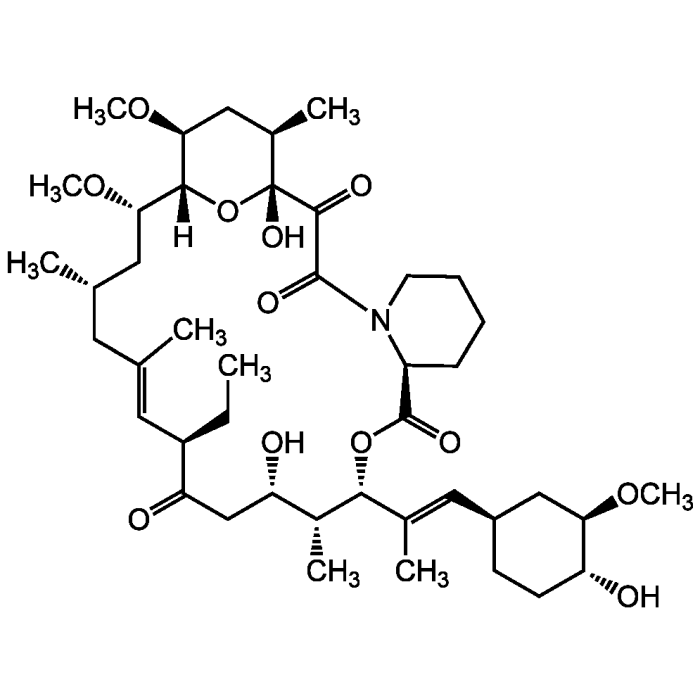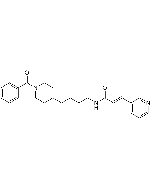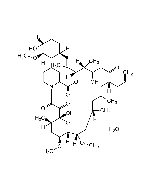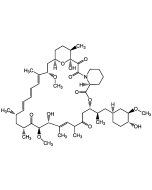Cookie Policy: This site uses cookies to improve your experience. You can find out more about our use of cookies in our Privacy Policy. By continuing to browse this site you agree to our use of cookies.
AdipoGen Life Sciences
Ascomycin (high purity)
As low as
30
CHF
CHF 30.00
In stock
Only %1 left
AG-CN2-0420-M0011 mgCHF 30.00
AG-CN2-0420-M0055 mgCHF 60.00
AG-CN2-0420-M02525 mgCHF 160.00

| Product Details | |
|---|---|
| Synonyms | Immunomycin; FK520; Analog of FK-506; FR-900520; L-683590; NSC 106410; WS 7238A |
| Product Type | Chemical |
| Properties | |
| Formula |
C43H69NO12 |
| MW | 792.0 |
| CAS | 104987-12-4 |
| RTECS | CI7570000; KD4185000 |
| Source/Host Chemicals | Isolated from Streptomyces sp.. |
| Purity Chemicals | ≥98% |
| Appearance | White to off-white solid. |
| Solubility | Soluble in DMSO or ethanol. |
| Identity | Determined by MS and IR. |
| InChi Key | ZDQSOHOQTUFQEM-VZQNCADUSA-N |
| Smiles | [H][C@]12O[C@](O)([C@H](C)C[C@@H]1OC)C(=O)C(=O)N1CCCC[C@H]1C(=O)O[C@@H]([C@H](C)[C@@H](O)CC(=O)[C@H](CC)\C=C(C)\C[C@H](C)C[C@@H]2OC)C(\C)=C\[C@@H]1CC[C@@H](O)[C@@H](C1)OC |
| Shipping and Handling | |
| Shipping | AMBIENT |
| Short Term Storage | +4°C |
| Long Term Storage | -20°C |
| Handling Advice | Protect from light. |
| Use/Stability |
Stable for at least 2 years after receipt when stored at -20°C. Working aliquots are stable for up to 3 months when stored at -20°C. |
| Documents | |
| MSDS |
 Download PDF Download PDF |
| Product Specification Sheet | |
| Datasheet |
 Download PDF Download PDF |
Description
- Macrolide antibiotic. Ethyl analog of FK506 [1, 2].
- Strong immunosuppressant. Binds to the FK-506-binding protein FKBP12. This complex inhibits calcineurin (protein phosphatase 2B (PP2B)) [2-4, 8].
- Suppresses the production of T helper type 1 (Th1) (interferon and IL-2) and Th2 (IL-4 and IL-10) cytokines in T lymphocytes and preferentially inhibits the activation of mast cells [5-7].
- Anti-inflammatory. Used for topical treatment of inflammatory skin diseases [5, 6].
- Potently inhibits anti-IgE-induced histamine and cytokine release and reduces IgE-dependent p38 MAPK activation in human basophils. Inhibits basophil degranulation at the initial phase of allergic skin reactions [7, 8].
- Antifungal [1].
- Antimalaria compound [9].
- Anticonvulsant (antiepileptic) [10, 11].
Product References
- Ascomycin, an antifungal antibiotic: T. Arai, et al.; J. Antibiot. 15, 231 (1962)
- Identity of immunosuppressant FR-900520 with ascomycin: M. Morisaki, et al.; J. Antibiot. 45, 126 (1992)
- Comparison of FK-506, rapamycin, ascomycin, and cyclosporine in mouse models of host-versus-graft disease and heterotopic heart transplantation: K.W. Mollison, et al.; Ann. N. Y. Acad. Sci. 685, 55 (1993)
- FR-900520 and FR-900523, novel immunosuppressants isolated from a Streptomyces. II. Fermentation, isolation and physico-chemical and biological characteristics: H. Hatanaka, et al.; J. Antibiot. (Tokyo) 41, 1592 (1988)
- Ascomycins: promising agents for the treatment of inflammatory skin diseases: C. Paul, et al.; Expert Opin. Investig. Drugs 9, 69 (2000)
- Ascomycin: an advance in the management of atopic dermatitis: C.E. Griffiths; Br. J. Dermatol. 144, 679 (2001)
- The ascomycin macrolactam pimecrolimus (Elidel, SDZ ASM 981) is a potent inhibitor of mediator release from human dermal mast cells and peripheral blood basophils: T. Zuberbier, et al.; J. Allergy Clin. Immunol. 108, 275 (2001)
- Calcineurin antagonists differentially affect mediator secretion, p38 mitogen-activated protein kinase and extracellular signal-regulated kinases from immunologically activated human basophils: K.E. Plath, et al.; Clin. Exp. Allergy 33, 342 (2003)
- Antimalarial effects of macrolactones related to FK520 (ascomycin) are independent of the immunosuppressive properties of the compounds: P. Monaghan, et al.; J. Infect. Dis. 191, 1342 (2005)
- Anticonvulsant effect of the calcineurin inhibitor ascomycin on seizures induced by picrotoxin microperfusion in the rat hippocampus: A. Vazquez-Lopez, et al.; Pharmacol. Biochem. Behav. 84, 511 (2006)
- Ascomycin and FK506: pharmacology and therapeutic potential as anticonvulsants and neuroprotectants: G. Sierra-Paredes & G. Sierra-Marcuno; CNS Neurosci. Ther. 14, 36 (2008)









